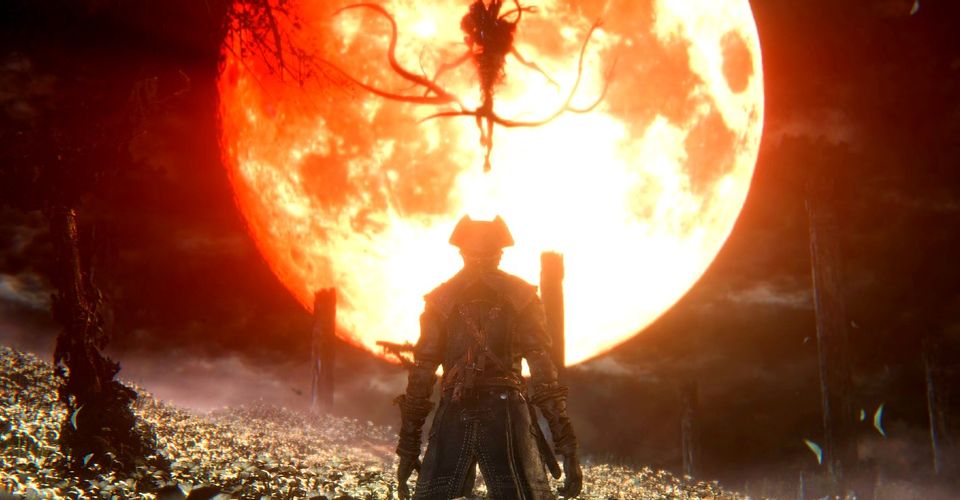Why Bloodborne’s True Ending Isn’t Its Best Ending

Upon its release in 2015, FromSoftware’s gothic action RPG Bloodborne was lauded as one of the greatest achievements in video game history. Bursting with optional content and customizable features, the game provides hours upon hours of enjoyment for players, with graphics that still hold up after five years and nearly unparalleled replay value.
Similar to its sister series Dark Souls, one of the many features Bloodborne offers to gamers is its multiple endings. Unlocked by different choices the player can make throughout the game, each ending has a different bearing on the direction of the narrative and, ultimately, the player experience. While one of the three possible endings, Childhood’s Beginning, is widely considered to be the “true” ending to the story, it fails to do justice to the game’s rich lore and complex worldbuilding.
Here’s why Bloodborne’s true ending isn’t its best ending.
Bloodborne’s Final Boss is a Pushover

Most Bloodborne fans agree that, after all the trouble they must go to in order to unlock the game’s “true” ending, the final boss fight itself is a major letdown. The Moon Presence boss doesn’t add anything new in terms of combat or arena, and the only really effective attack it has is an unavoidable AOE that reduces the player to 1 HP – a move that leaves the boss temporarily exhausted, giving the player ample opportunity to regain their health using the game’s rally system. The Moon Presence often only defeats the hunter by virtue of the player having already depleted their blood vials in the Gehrman encounter that immediately precedes the fight – only to have its lunar derriere kicked into oblivion upon the player’s resurrection. After Snatchers, Lanterns, and Rom (oh my!), the Moon Presence boss fight comes as a major disappointment to most Bloodborne players.
Ascension Was Never The Character’s Goal In Bloodborne

Little is known about the player character’s life before they arrived in Yharnam. Their reasons for journeying to the cursed city, on the other hand, are very clear: the player seeks a cure for their unknown illness, and Yharnam is the epicenter of blood transfusion and healing. After their initial transfusion, the player finds himself or herself transformed into a hunter, a beast-killing warrior with heightened abilities and a mystical connection to a sanctuary realm known as the Hunter’s Dream. They are then instructed to seek a mysterious substance called Paleblood in order to transcend the beast hunt and leave it behind, as if it were all nothing but a bad dream.
Though no one appears to know what Paleblood actually is (and, in true FromSoftware fashion, the game never offers a definitive explanation), cryptic lore notes and the odd friendly NPC direct the hunter to the Healing Church, the home of blood ministry. Once there, the player slowly uncovers the church’s true, sinister nature: the “healing” blood transfusions the church is famous for are the source of Yharnam’s scourge, causing recipients to transform into all manner of hideous beasts. Though the church is aware of the consequences of blood transfusion, its upper echelons have persisted with their practices, using orphans, kidnapping victims, and other unwitting recipients as human experiments in their quest to elevate humanity to the status of gods, known as Great Ones.
When the hunter resists and ultimately defeats the Moon Presence, a Great One, in the final boss battle, the player unlocks the so-called “true ending” in which they are transformed into an infant Great One, “lifting humanity into its next childhood.” Translation: they become a baby squid. While this may have been the goal of fanatical characters like Micolash and the imposter Iosefka, this was never the player character’s goal. They slew both of those characters and many other proponents of the Healing Church, never once aligning themselves with the church’s sinister quest. They simply sought a cure for their affliction and, when forced to join the hunt, an escape from their newfound hellish existence. While it could be argued that there is an implied Philosopher’s Stone-esque element at play, in which one is only able to become a Great One if they don’t explicitly wish to do so, that is purely conjecture. The hunter’s “ascension” into a creature straight out of Lovecraftian horror does not a represent a victory for the character, but a tragic ending similar to those met by Gilbert and the real Iosefka.
What Bloodborne’s REAL Ending Is

That leaves two possible options for the coveted title of Bloodborne’s best ending: Yharnam Sunrise, in which the hunter submits to Gehrman and awakens to a new day in the real world, or Honoring Wishes, in which the player fights and defeats Gehrman, only to be forced to take his place as the custodian of the Hunter’s Dream. The latter represents a fairly typical “twist” ending that horror fans will recognize from a variety of other media, in which the protagonist believes they have escaped or defeated their terrorizer, only to become trapped in their nightmare forever. Coupled with a comparatively lackluster final boss in Gehrman, who many players find to be too similar to the NPC hunters they’ve faced throughout the game, this causes the Honoring Wishes ending to fall somewhat flat. Similarly, the Yharnam Sunrise ending can feel somewhat anticlimactic, as it foregoes a final boss fight entirely in favor of submitting to Gehrman, killing the player off in a cutscene. However, of the three possible endings, Yharnam Sunrise features the most interesting lore implications.
After the hunter submits to Gehrman and awakens anew in the real world, the game briefly cuts back to the Hunter’s Dream. There, the doll that has guided the hunter throughout their journey kneels at a new grave in the cemetery. She then utters a phrase she has used throughout the game upon the player’s departures from the Hunter’s Dream: “Farewell, good hunter. May you find your worth in the waking world.”
It’s the player’s grave.
The end credits roll, and, much to the chagrin of Bloodborne players everywhere, the game immediately launches a new campaign in NG+ mode. What many disgruntled players don’t realize unless they stick with the NG+ campaign is: their grave is still there.

When the player re-enters the Hunter’s Dream for the first time, a new grave will be in the exact same spot it appeared in within the cut scene. Later in the game, the player can find the doll praying at their grave. Speaking to her in this location unlocks a rare dialogue:
This grave stands in memory of a hunter I once knew. Though enchanted by the dream, she/he remained strong, and eventually saw the light of dawn. I pray that you’ve found meaning and comfort in the waking world.
The lore implications of this brief bit of dialogue are massive. The fact that the doll must explain the significance of the grave to the player character indicates that the hunter does not remember their previous experience (and just conveniently woke up with a bunch of cool weapons and gear). Conversely, the doll’s use of second person indicates that she remembers the player from their previous campaign, and still has a strong emotional attachment to the character. This indicates that the NG+ isn’t new at all, but that the player is simply back for another hunt. If that is the case, it means that the hunter didn’t escape the nightmare of the hunt after all… and perhaps they never will.
Ultimately, players must unlock all three endings if they wish to 100% the game. Though each conclusion has its strengths and weaknesses, the so-called “true” ending fails to do the rest of the game justice. Yharnam Sunrise, though it may feel anticlimactic in the moment, is the most satisfying ending to Bloodborne’s narrative – and, hopefully, indicative of another Bloodborne game to come.
About The Author

















